Project management
Use this function to define the details of a particular project or job your company is working on. A project forms a fundamental part of the billing contract.
Important
Refer to the Project management (PJM) guide to access a comprehensive overview of the Sage X3 Project management module. The Project management guide covers the prerequisites and setup needed to use the Project management module, and describes the integrated features provided for managing projects. Click the link that applies to your Sage X3 solution:
- Project management (PJM) if you're using Sage Business Cloud.
- Project management (PJM) if you're using an on-premises instance of Sage X3.
 Project management (PJM) guide: Refer to the Creating a project chapter for information on the use of this function.
Project management (PJM) guide: Refer to the Creating a project chapter for information on the use of this function.
Each project structure comprises a generic design. This generic design can be applied as the basis for managing many types of project. It provides a comprehensive solution when applied to both a services-type project such as a development project, and to a manufacturing project such as an infrastructure project.
Prerequisites
 Refer to documentation Implementation
Refer to documentation Implementation
Example project: Rotating tower crane
This example demonstrates elements of a Project management project that would be implemented to deliver a rotating tower crane to a customer.
The following diagram shows the main components of a rotating tower crane (RTC).
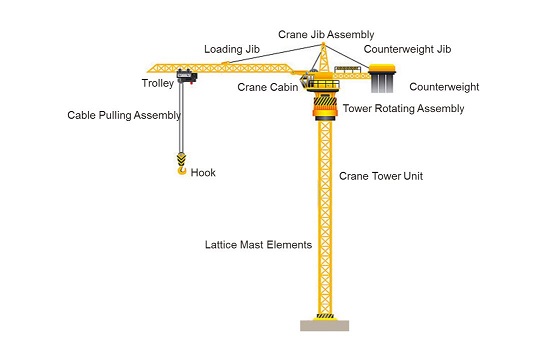
Structure
The first stage of this example project would be to draw up a structure diagram for producing the rotating tower crane above.
This example project will be structured using the 3 master phases that need to be tracked from a financial perspective: a "design" phase, a "manufacturing" phase, and an "installation" phase. The "manufacturing" phase incorporates the manufacturing of the major components of the crane. The "installation" phase in this example includes both assembly and quality assurance elements. An example Sage X3 Project management structure diagram is provided below.
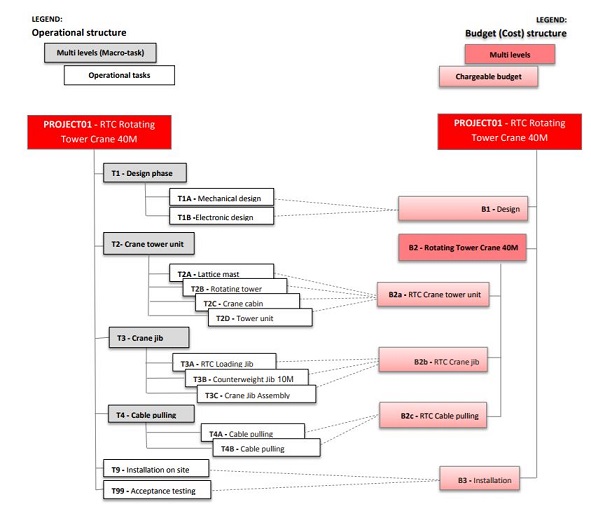
The project details need to be created in the Project management (GESPJM) function.
A cost structure to track costs is defined.
An operational structure to track replenishments and delays is defined.
The following sample screen represents a section of the Operational structure from the structure diagram.
- The labor task T10101 is to manage the assembly of the T10101A (Crane tower unit) task. Time planned and consumed, and the costs can be tracked using this task.
- Tasks T10102-4 are the material tasks. In this example, these tasks manage the product deliveries.
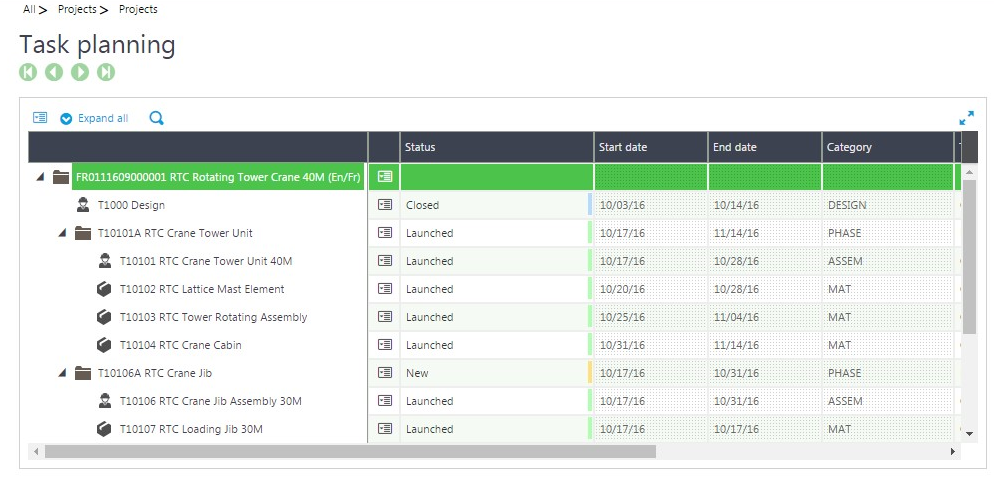
The following example diagram represents the labor tasks for the project:
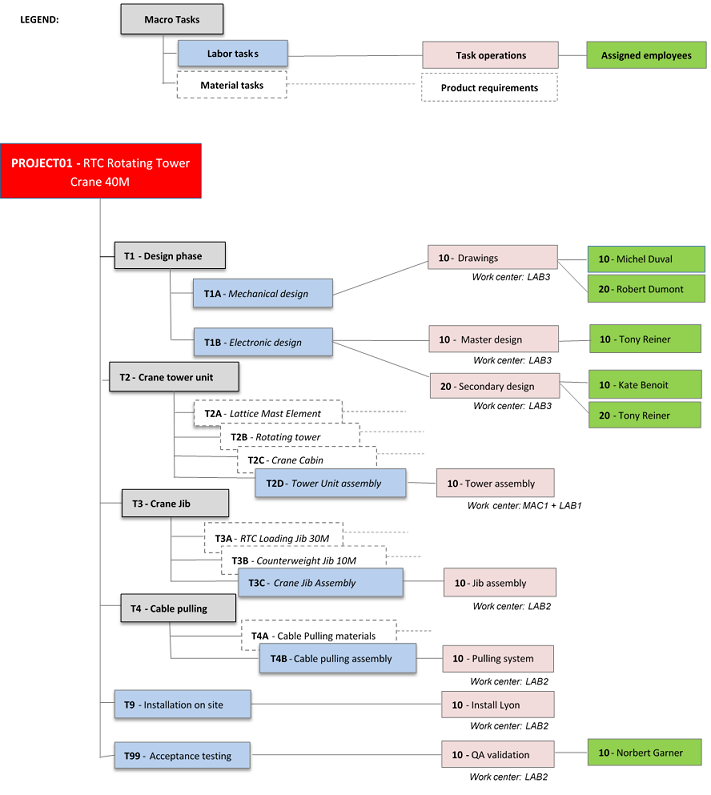
The following example diagram represents the material tasks for the project:
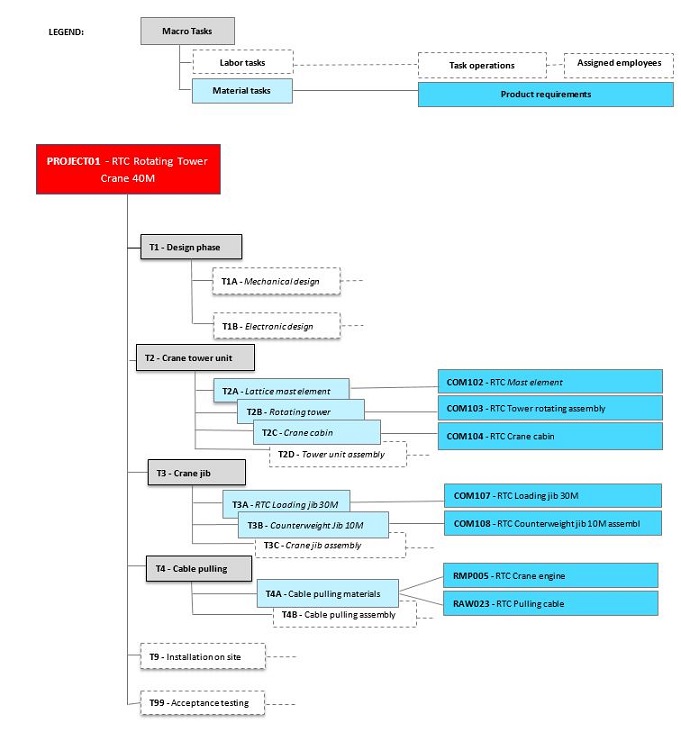
 Project management (PJM) guide: Refer to Appendix 1: Example project which includes Reference data for this example.
Project management (PJM) guide: Refer to Appendix 1: Example project which includes Reference data for this example.
Error messages
The only error messages are the generic ones.
Tables used
 Refer to documentation Implementation
Refer to documentation Implementation
